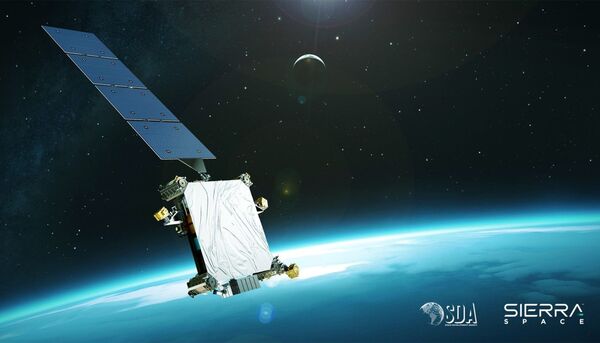- About
- Intara
- Capabilities
- Advisory
- Resources
- News
- Store
04 March 2024
GEOST bets on focal plane, edge computing capabilities for PWSA fire control
by Carlo Munoz


An artist's rendition of Sierra Space's T2TL low Earth orbit satellite prototype for the PWSA. (Sierra Space)
Arizona-based sensor payload company GEOST is betting big that improved focal plane fidelity, coupled with artificial intelligence (AI)-enabled imagery processing at the edge, will be the solution for the new fire-control payload being developed for the Pentagon's Proliferated Warfighter Space Architecture (PWSA).
GEOST – a subsidiary of LightRidge Solutions – and the Space Development Agency (SDA) in February reached a deal for GEOST to develop and produce 16 fire-control mission payloads for Tranche 2 Tracking Layer (T2TL) of the PWSA.
The PWSA payload contract “is a transformational win” for the GEOST team, according to Bill Gattle, CEO of LightRidge Solutions.
The payload development deal “does open up new markets … proving that some of the things we have done, at a smaller scale, we can now do at a larger scale”, he said during an early February interview with Janes .
The key to GEOST's successful bid is the company's decision to focus explicitly on development of a fire-control solution for the PWSA, rather than propose a more mature variant of the wide field-of-view (FOV) capability for T2TL. “The reality is we knew we would be an also ran on the wide field-of-view” capability, according to Gattle. “So … we went after the fire-control sensor,” he added.
“All the wide field-of-view [capability] does is say, ‘there are things in this image that look like threats to the United States,'” Gattle said.
Already a Janes subscriber? Read the full article via the
Client Login
Interested in subscribing, see What we do
Arizona-based sensor payload company GEOST is betting big that improved focal plane fidelity, couple...
 Details
Details 